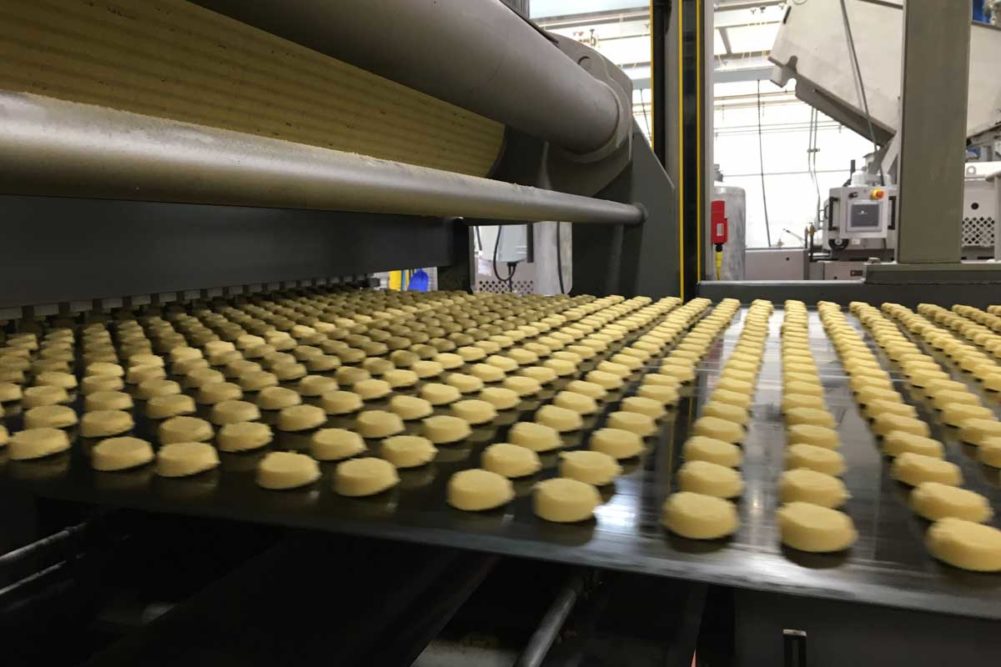Decadence drives the cookie category. While consumers may preach health and nutrition as their drivers for purchasing other food, when it comes to sweets, they seem to want something indulgent rather than healthy. In the 52 weeks ended Dec. 29, 2019, IRI reported that the cookie category experienced 3.3% growth, topping out at $9 billion in sales. Pulling that growth are products and brands like Tate’s Bake Shop, which saw a whopping 18% growth. Consumers have spoken with the almighty dollar: When they want to eat a cookie, they want a really good one.
Decadent, gourmet style cookies require some extra processing considerations, however. This usually requires bigger inclusions and premium ones that cost extra. Consumers want to see those inclusions intact and visible.
“When bakers use larger inclusions, they want the aesthetic of bigger chunks, a bigger piece in the cookie to make it look more attractive, and I think that it also makes a different type of bite or mouthfeel when you eat the cookies,” said Sam Pallottini, director of cookie, cracker and pet food sales, Reading Bakery Systems (RBS).
These larger inclusions and the aesthetic they bring require that they be visible and intact in the cookie. Processing methods, particularly the mixer and portioning equipment, can smash these inclusions, ruining the effect. Crushed chunks and chips can not only lose their appeal while intact, but they can also discolor dough.
“Inclusions can break, mark the dough and compromise not just the appeal but even the taste,” said Franco Fusari, commercial director and co-owner, Minipan. “Moreover, products with broken inclusions may not pass the quality check and get wasted, becoming both an ethical and economic problem.”
To preserve these inclusions and their appeal in gourmet cookies, bakers can choose equipment and processing strategies that prevent damage and deliver a picture-perfect product.
The mixer and portioning equipment pose the biggest threats to inclusions during cookie processing. In the mixer, inclusions can be crushed and discolor a dough. At the wirecutter or depositor, inclusions can get lost, cut or broken into pieces.
The easiest fix at the mixer is to time the addition of inclusions correctly. These chunks, nuts and chips shouldn’t be added until the end and only mixed until even dispersion. Operators should limit the inclusion mix time cycle to prevent inclusion damage and distortion.
“Entry time of the inclusions into the ingredient mixing cycle is extremely important as this ensures the inclusion’s size, shape and integrity are maintained by not overworking the inclusions by the mixer beater action and dough temperature,” said Andy Green, technical engineering manager, Spooner Vicars.
He also asserted that Spooner Vicars’ Twin Helical Beater with Fixed Sprag ensures the inclusions are dispersed quickly, and evenly throughout the dough, which will pay off later in regards to product piece weight.
Portioning equipment — wirecutters and depositors — is the next hurdle inclusions must clear.
“Dividing or forming the cookie itself, there’s a lot of equipment out there that uses rollers that have teeth on them to sheet out the cookie or extruders that are pushing or pumping the cookie,” said John Giacoio, vice president, sales, Rheon USA. “Those points would also damage particulates or raise the temperature of the dough.”
Temperature increases can be problematic because it melts not only chocolate but also the butter that controls cookie spread in the oven. Preserving large inclusions, however, often comes down to their size.
“Traditional confectionery depositor gears often limit the size of particulates that can be used as larger particulates may be crushed or damaged by the gears,” said Jon Cabral, director of advertising and marketing, Erika Record. “Likewise, during the depositing process, traditional wirecut or guillotine-style depositing heads tend to result in product that can be torn or not uniform in deposit.”
Nuts, chunks and chips will be broken up, maybe even crushed. Fruit pieces are less at risk, Mr. Pallottini said, but they can get hung up on the wire blade of the wirecutter.
“Usually you can either chill or cool or freeze your raisins to make the fruit easier to cut so it doesn’t hang up on your wires as much,” he said. “Dough temperature is really critical, and often you can use your inclusions to help control the temperature of your dough.”
Equipment technology needs to provide adequate space for large inclusions and prevent temperature spikes if bakers want a quality cookie at the end of the processing line.
This article is an excerpt from the April 2020 issue of Baking & Snack. To read the entire feature on cookie technology, click here.





